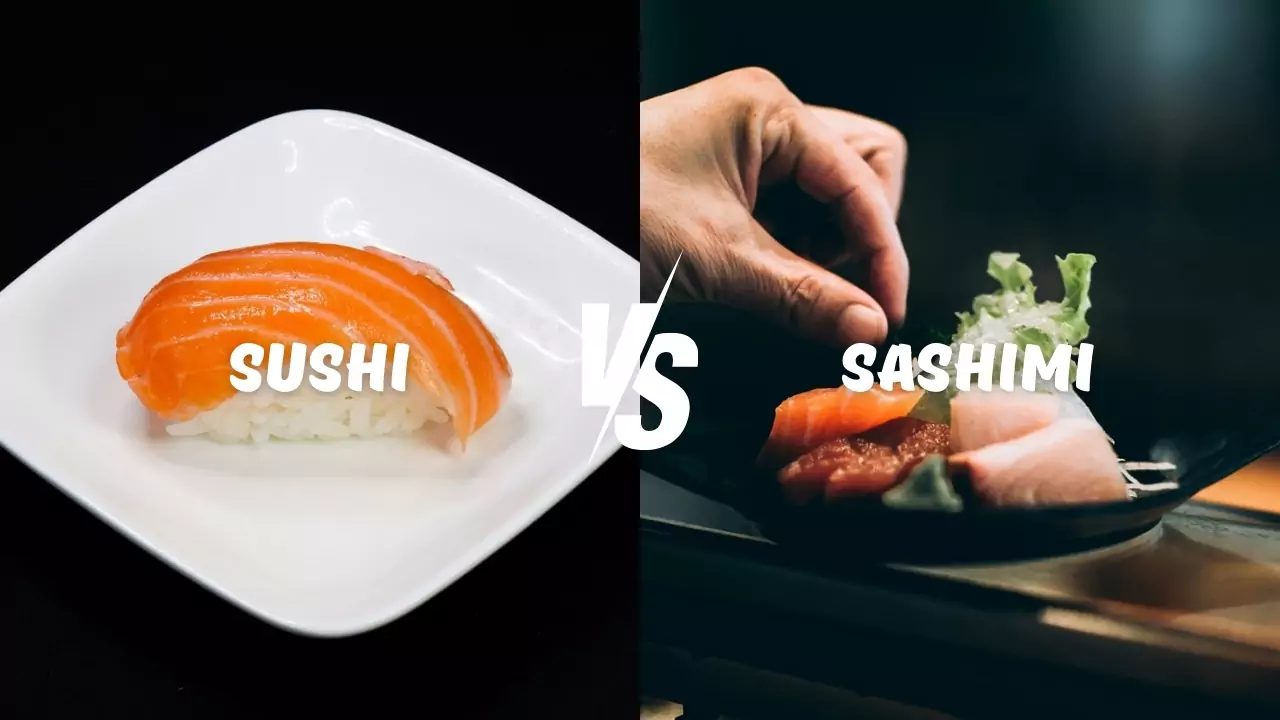Sushi and sashimi are two of the most recognized delicacies within Japanese cuisine, yet many individuals struggle to differentiate between the two. While both emphasize freshness and quality, they embody distinct preparations, ingredients, and cultural attributes that set them apart. Sushi, a delightful fusion of vinegared rice and various fillings, often presents a colorful, visual feast, while sashimi showcases the raw artistry of seafood with its simplicity and elegance. Understanding these dishes’ intricate nuances can elevate our appreciation for them and enhance our dining experience. This exploration delves into the fascinating world of sushi and sashimi, comparing aspects such as their defining characteristics, preparation methods, nutritional profiles, cultural significance, and much more.
To fully appreciate these culinary treasures, one must look beyond just flavor. It’s about understanding the rich history, the meticulous preparation, and the artistry involved in presenting each dish. By exploring the similarities and differences, we can arrive at a deeper understanding and respect for these globally beloved foods, letting us savor each bite fully and contributing to our culinary experiences.
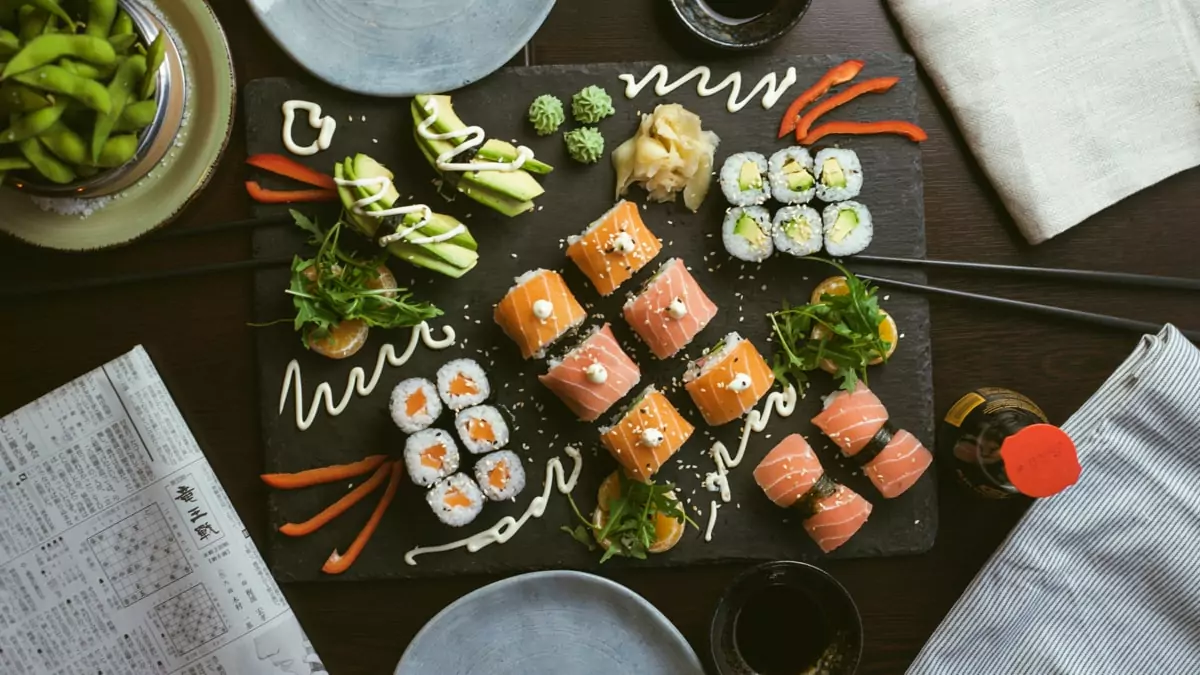
Differences between Sushi and Sashimi
When examining sushi and sashimi, one can think of them as two unique melodies in the symphony of Japanese cuisine, each with its distinctive notes and harmonies. At their core, the primary difference lies in the main ingredients. Sushi is built around vinegared rice, which serves as the foundation for various toppings and fillings. In contrast, sashimi consists wholly of thinly sliced raw fish or meat, devoid of any rice or other accompaniments.
While both dishes prioritizing freshness, their respective serving styles bring out the beauty of their ingredients differently. Sushi can take many forms whether nigiri, where rice is topped with fish, or maki, where ingredients are rolled in nori and rice each form showcases a creative combination of flavors and textures. On the other hand, sashimi enjoys a minimalist approach, aiming to highlight the fish’s delicate qualities, with presentation often involving artistic arrangements that elevate the simplicity of the dish.
Key Differences:
| Aspect | Sushi | Sashimi |
|---|---|---|
| Main Component | Vinegared rice with toppings | Thinly sliced raw fish or meat |
| Accompaniments | Various sauces and fillings | Primarily served with soy sauce and wasabi |
| Preparation Method | Assembling ingredients with rice | Skillfully slicing fish or meat |
| Types | Nigiri, maki, temaki, gunkan | Different kinds of raw fish |
| Nutritional Content | Higher carbs and calories | Lower calories, high in protein |
In essence, sushi invites diners to savor a composite experience with multiple layers of flavor, while sashimi encourages appreciation for pure, unobstructed taste. Understanding these differences grants us insight into each dish’s culinary philosophy, shaping our perspective and enjoyment when indulging in Japanese cuisine.
Ingredients Used in Sushi and Sashimi
Delving into the ingredients, we see a rich tapestry woven by both sushi and sashimi, with each ingredient serving a particular role in crafting the overall dish. Sushi ingredients tend to be diverse and vibrant. At its core is the sushi rice, which is seasoned with a specific mixture of vinegar, sugar, and salt, yielding a slightly tangy flavor that is a hallmark of sushi. Sushi’s adaptability allows it to incorporate various components, including seafood (both raw and cooked), vegetables, fruits, or even tofu, catering to different taste preferences and dietary needs.
Common Ingredients in Sushi:
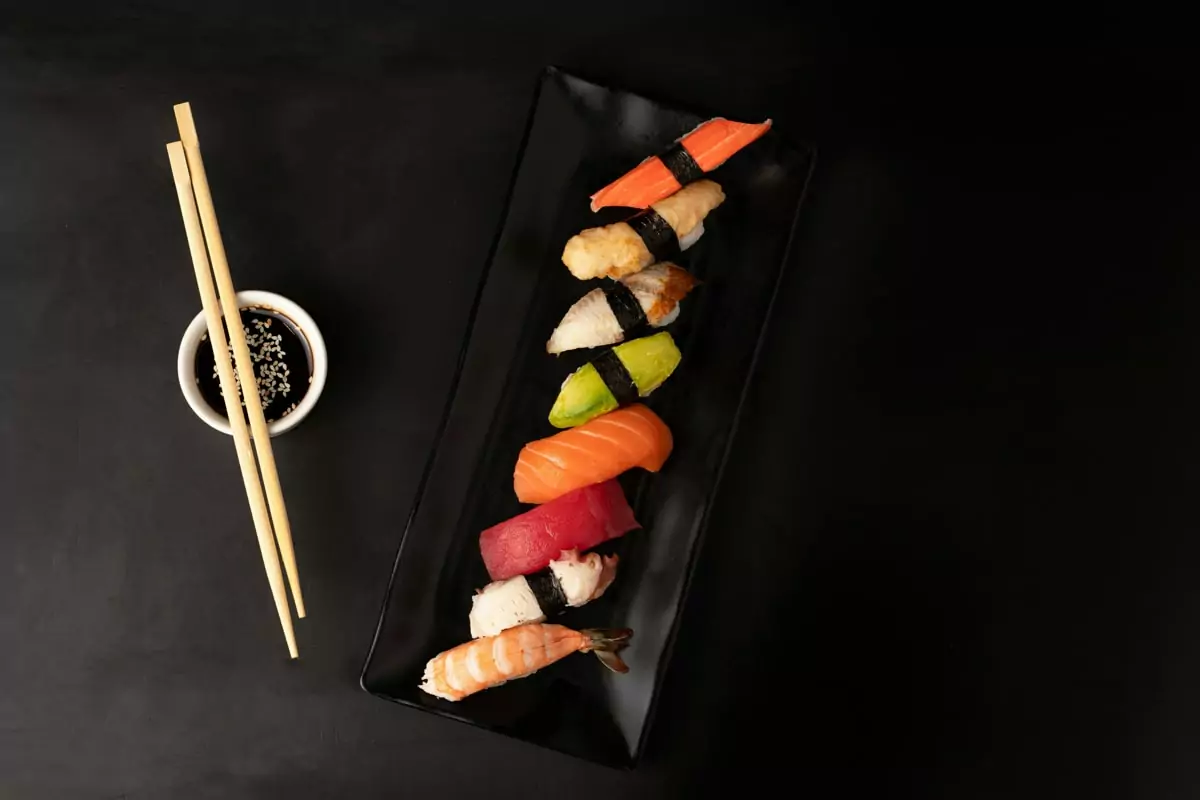
- Sushi Rice: Short-grain rice, prepared with vinegar, sugar, and salt.
- Fish: Salmon, tuna, eel, shrimp.
- Vegetables: Avocado, cucumber, carrots.
- Accompaniments: Wasabi, pickled ginger, soy sauce, and sushi rolls often feature nori (seaweed).
Conversely, sashimi emphasizes quality over variety. The main ingredient is the fish or seafood itself. It is crucial for the sashimi to be of the highest quality, as the appreciation of the dish comes from the fresh and untainted flavors of the ingredients. Sashimi typically features fish like salmon, tuna, and yellowtail, and may occasionally include other seafood, such as squid or octopus.
Common Ingredients in Sashimi:
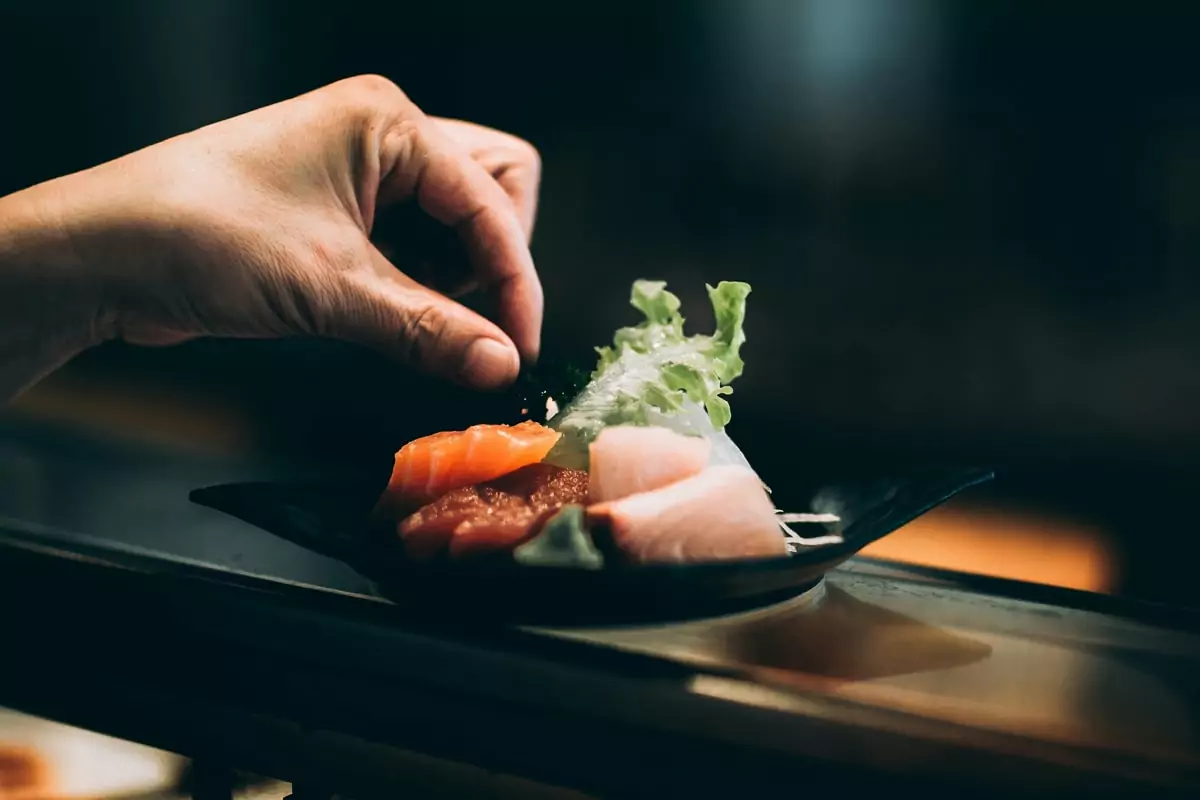
- Fish/Seafood: Salmon (sake), tuna (maguro), yellowtail (hamachi), octopus (tako), and sea bream (tai).
- Accompaniments: Wasabi, soy sauce, and sometimes garnishes like daikon radish or shiso leaves.
Preparation Methods of Sushi and Sashimi
The preparation methods for sushi and sashimi are akin to the differentiated strokes of a skilled painter, each technique influencing the overall outcome and presentation. For sushi, the preparation begins by cooking the short-grain rice to perfection and blending it with vinegar, sugar, and salt to impart the desired flavor. This step is essential as it not only flavors the base but also assists in forming various sushi types, such as nigiri, where the rice is hand-shaped and topped with fish, or maki, where rice and ingredients are rolled together and sliced.
Sushi Preparation Process:
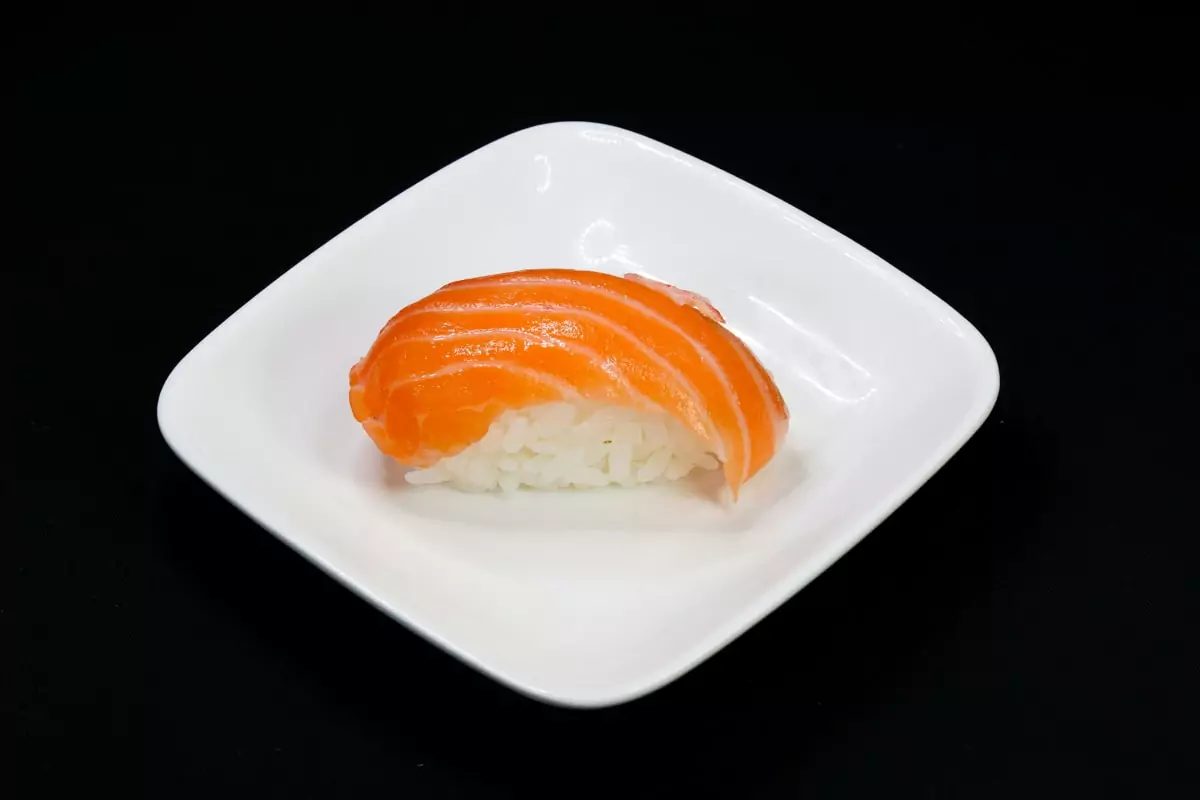
- Prepare Sushi Rice: Cook short-grain rice and season it with a mixture of vinegar, sugar, and salt to achieve flavor and texture.
- Select ingredients: Choose from raw fish, vegetables, or other fillings.
- Assemble: For nigiri, mold the rice and carefully place a slice of fish. For maki, lay rice and fillings on nori, roll tightly, and cut into pieces.
On the other hand, the art of preparing sashimi is all about precision and technique. The fish must be exceptionally fresh, often sourced directly from reputable fish markets. The method involves slicing the fish at a specific angle and thickness to create delicate, uniform pieces that enhance the dish’s visual appeal and textural experience. The presentation of sashimi showcases the quality of the fish, and each slice must reflect the chef’s skill.
Sashimi Preparation Process:
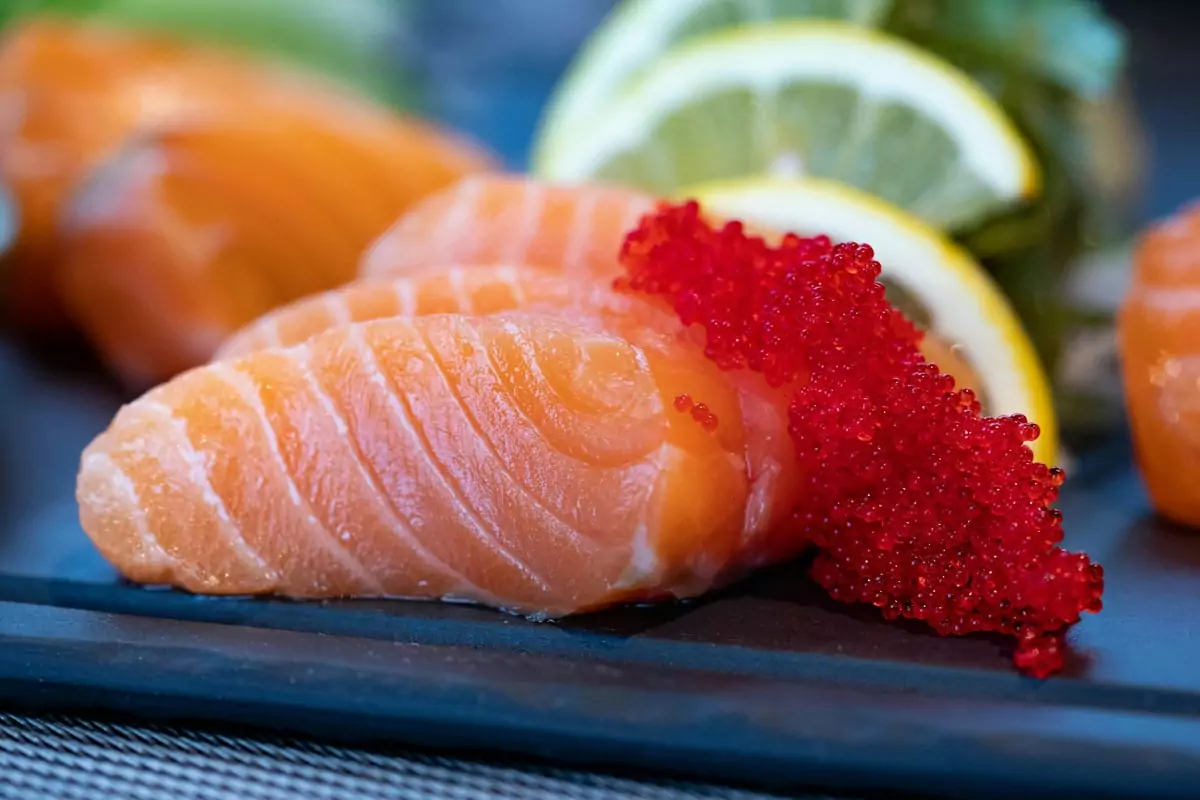
- Select Fresh Fish: Choose high-quality fish, such as salmon or tuna.
- Slicing Technique: Employ a sharp knife to slice the fish thinly and with precision.
- Present Elegantly: Arrange the slices on a plate, often garnishing with daikon or shiso to enhance visual appeal.
In summary, the preparation of sushi and sashimi not only distinguishes them but also signals the craftsmanship and care put into each dish. Understanding these methods can deepen our appreciation for the culinary arts and highlight the significance of quality ingredients in creating authentic Japanese cuisine.
Nutritional Comparison: Sushi vs Sashimi
When it comes to nutrition, sushi and sashimi present two distinct perspectives. Sushi, generally richer in carbohydrates and calories, emerges primarily from its vinegared rice base, which serves as the main ingredient. Depending on the type of sushi and additional fillings, the caloric content can vary widely; for example, a standard roll might range anywhere from 200 to 500 calories.
Nutritional Profile of Sushi:
- Calories: A typical sushi roll contains 200-500 calories.
- Carbohydrates: High due to the presence of rice, contributing significantly to overall caloric intake.
- Protein: Variable, depending on the fish or other ingredients; some rolls may have lower protein content, particularly those that lean heavily on rice or vegetables.
Conversely, sashimi stands out for its focus on providing a low-carb, high-protein option. With minimal calories, a piece of sashimi may hold between 20-60 calories, making it an appealing choice for individuals looking to maintain a low-calorie diet. Additionally, sashimi, particularly from fatty fish like salmon, can be rich in omega-3 fatty acids, contributing to heart health and providing anti-inflammatory properties.
Nutritional Profile of Sashimi:
- Calories: Generally low, often between 20-60 calories per piece.
- Carbohydrates: Minimal to none, as there is no rice present.
- Protein: High-quality protein, depending on the fish type, offering significant health benefits.
- Fats: Higher in heart-healthy omega-3 fatty acids from fatty fish.
Popular Types of Sushi

Sushi manifests itself in various delightful forms, each with its unique combination of flavors and textures that contribute to its worldwide popularity. Understanding popular types of sushi can guide diners in making informed choices while enjoying sushi cuisine.
Popular Types of Sushi:
- Nigiri: This classic sushi type features hand-formed rice molded into small mounds with fish placed on top. A hint of wasabi often adorns the fish.
- Maki: Typically referred to as sushi rolls, maki consists of rice and fillings rolled in nori and sliced into bite-sized pieces. This style allows for creativity in ingredient combinations.
- Uramaki: Similar to maki, uramaki rolls the rice on the outside, while the nori wraps the fillings, leading to visually stunning dishes often topped with fish roe or avocado.
- Temaki: Hand rolls that come in a cone shape filled with rice, raw fish, and vegetables; they are meant to be eaten with hands rather than chopsticks, creating a fun and interactive dining experience.
- California Roll: A Western adaptation, these uramaki rolls typically feature imitation crab, avocado, and cucumber, offering a milder flavor for those new to sushi.
By grasping these popular sushi types, diners can better navigate sushi menus and enhance their culinary adventures, discovering new flavors and preparing for delightful surprises.
Common Types of Sashimi
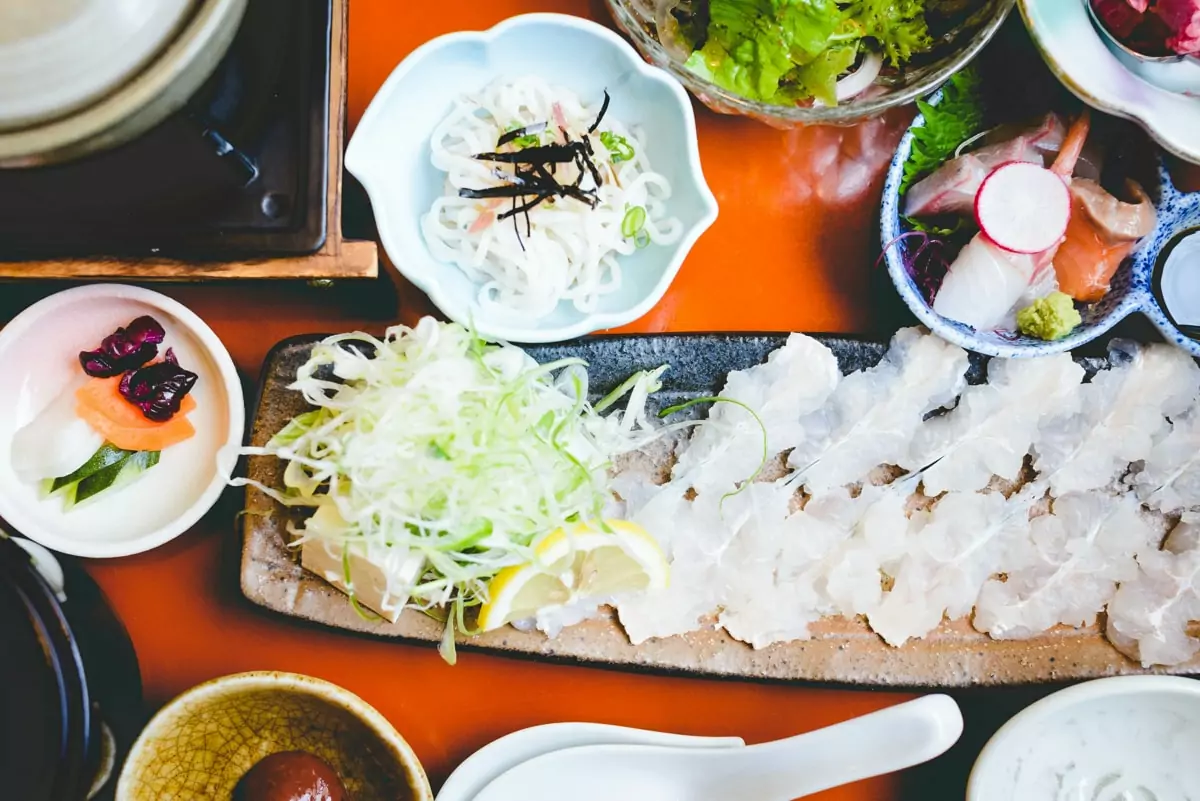
Sashimi is revered for its simplicity and quality, highlighting the natural flavors of raw fish. Here’s an exploration of some of the common types of sashimi, showcasing the beautiful diversity available:
Common Types of Sashimi:
- Salmon (Sake): Rich and buttery, salmon sashimi is popular for its flexible flavor and texture.
- Tuna (Maguro): With various cuts, such as fatty tuna (otoro) and lean tuna (akami), this fish offers contrasting flavors for sashimi lovers.
- Yellowtail (Hamachi): Slightly sweet and delicate, yellowtail sashimi is light on the palate, drawing appreciative nods from enthusiasts.
- Octopus (Tako): Precise slicing creates tender octopus sashimi with a unique texture that captivates adventurous diners.
- Sea Bream (Tai): This mild-flavored fish is often highlighted for its lean texture and is enjoyed for its aesthetic appeal.
Both sushi and sashimi provide vibrant culinary experiences. By understanding the common types of sashimi, diners can discover and appreciate the varying textures and taste profiles, enriching their knowledge of traditional Japanese cuisine.
Historical Background of Sushi and Sashimi
To appreciate sushi and sashimi fully, it’s essential to delve into their rich historical backgrounds. Both dishes have ancient roots, evolving over time to reflect changes in society, ingredient availability, and culinary practices.
Sushi’s Evolution: Sushi’s origins can be traced back to Southeast Asia, where fermented fish was preserved in fermented rice this technique spread to Japan, where it underwent significant transformation. During the Muromachi period (1336-1573), sushi started resembling its modern form, featuring rice flavored with vinegar to enhance preservation. By the Edo period (1603-1868), nigiri sushi was born, providing a vibrant street food of fresh fish topped on hand-formed rice, captivating the urban population with new flavors and choices.
Sashimi’s Roots: On the other hand, sashimi has an equally compelling history linked with the samurai’s fishing practices. Gradually, sashimi gained recognition as high culinary art that valued the quality of fish. The term “sashimi” translates directly to “pierced flesh,” highlighting the meticulous skill needed to create thin, uniform slices that accentuated the fish’s freshness.
Cultural Significance: While sushi began as a method of preserving seafood, it has evolved to be celebrated in social gatherings, emphasizing hospitality and sharing. In contrast, sashimi reflects simplicity and purity, showcasing the essence of Japanese culinary artistry through the freshness of its ingredients and presentation, exhibiting great respect for the fish.
By understanding the historical context of sushi and sashimi, diners can appreciate the cultural narratives that accompany each dish, enhancing their overall experience and enriching their culinary adventures.
Cultural Significance of Sushi and Sashimi
Both sushi and sashimi hold distinct cultural significance within Japanese society, representing different aspects of culinary philosophy and approach to food. To appreciate these cultural elements further, we can observe how each dish contributes to Japan’s culinary heritage.
Sushi’s Role: Sushi embodies social conventions and reflects communal dining practices. Often served during celebrations, gatherings, or casual meals, sushi is symbolic of hospitality and bonding among people. The creative departure from traditional sushi-making, leading to innovative fusion rolls and styles, exhibits the adaptability of Japanese cuisine to contemporary tastes while remaining firmly rooted in tradition.
Sashimi’s Essence: On the other hand, sashimi represents refinement and the celebration of nature’s bounty. It focuses on displaying the chef’s skill in preparing high-quality fish, allowing diners to enhance their appreciation for freshness. Often recognized as a delicacy, sashimi prompts mindfulness and encourages savoring the pure flavors of each slice, fostering a deep respect for ingredient quality.
Artistry and Presentation: Furthermore, both dishes showcase significant craftsmanship. Sushi preparation often involves intricate assembly and creative presentation, while sashimi relies on precise slicing techniques and elegant plating. These elements transform each dish into a work of art, inviting diners to celebrate the craftsmanship involved.
In essence, understanding the cultural significance of sushi and sashimi deepens appreciation for these beloved dishes. The values embedded in their preparation and consumption resonate with the philosophy of wa harmony, underscoring the emphasis on quality ingredients, presentation, and the shared joy of enjoying food together.
Serving Styles for Sushi and Sashimi
The way sushi and sashimi are served significantly impacts the dining experience, embracing the essence of Japanese aesthetics while enhancing flavor enjoyment. Understanding these serving styles can refine how we indulge in these delectable dishes.
Sushi Serving Styles:
- Nigiri: Typically served as two pieces, nigiri showcases a mound of vinegared rice topped with fish, presented beautifully and often accompanied by a small dollop of wasabi underneath the fish.
- Maki: Sushi rolls are presented in bite-sized pieces, garnished with complementary ingredients like sesame seeds or tobiko (fish roe) for added flavor.
- Temaki: Hand rolls are served in a cone shape, allowing diners to hold and enjoy the ingredients in a more interactive way.
- Oshizushi: These pressed sushi pieces are neatly arranged and typically sliced into perfect squares or rectangles for serving, each piece revealing colorful fillings.
Sashimi Serving Styles:
- Presentation on a Platter: Sashimi is often presented elegantly on a wooden or ceramic platter, typically adorned with a garnish of daikon radish or shiso leaves, drawing attention to the pristine quality of the fish.
- Minimal Garnishing: The focus remains on the fish itself, with garnishes serving to enhance the overall presentation without distracting from its natural beauty.
- Accompagnements: Sashimi is usually served with garnishes on the side, such as soy sauce and wasabi, rather than integrated into the dish, allowing diners to customize their taste experience.
By understanding how sushi and sashimi are served, diners can engage more mindfully with their meal, appreciating both the aesthetics and interactive elements of these dishes. The careful attention to presentation underscores the artistry of Japanese cuisine, elevating our dining experiences.
Flavor Profiles: Sushi vs Sashimi
Exploring the flavor profiles of sushi and sashimi reveals two unique culinary landscapes, each with its own characteristics. Sushi, with its multitude of ingredients, offers a symphony of flavors and textures in every bite. The combination of vinegared rice, filling, and various sauces creates a well-rounded taste experience. For example, when biting into a salmon roll, the sweet and tangy rice harmonizes with the rich, fatty salmon while the wasabi adds an invigorating kick.
In contrast, sashimi is a celebration of simplicity, refining the experience to focus on the fish’s natural flavor without distractions. Each type of sashimi has distinct characteristics; for instance, the buttery texture of salmon contrasts beautifully with the firmer texture of tuna. A slice of yellowtail may lend a slightly sweet flavor profile, enriching the sashimi experience with its unique character. This approach allows diners to become intimate with the taste and quality of the fish.
Sushi Flavor Profiles:
- Vinegared Rice: Provides a slightly sweet, tangy base.
- Ingredients: Fresh fish (like tuna and salmon), vegetables (like cucumber and avocado), and sauces (like spicy mayo) create lively combinations.
- Sauces and Garnishes: Soy sauce, wasabi, and pickled ginger round out the taste experience, enhancing flavor without overwhelming the base.
Sashimi Flavor Profiles:
- Fresh Fish: The flavor spectrum varies from the rich richness of salmon to the firmer, clean taste of tuna.
- Subtle Seasoning: Sashimi often allows the natural flavors to shine, with minimal seasoning usually just a dab of wasabi or a dip in soy sauce.
- Textural Experience: The texture of each fish is a crucial component, ranging from silky-smooth salmon to the firmer bite of octopus.
In summary, sushi invites a complex weaving of flavors, whereas sashimi focuses on the elegance of pure fish. Understanding these flavor profiles can deepen our appreciation for each dish and guide our choices at the table, leading to more fulfilling dining experiences.
Common Misconceptions about Sushi and Sashimi
In the world of culinary delights, misconceptions often cloud our understanding of beloved dishes. Sushi and sashimi are frequently mischaracterized, leading to confusion about their differences and unique qualities.
Myth 1: Sushi and Sashimi Are the Same: Despite being frequently grouped together, sushi and sashimi are fundamentally distinct. Sushi consists of vinegared rice topped with various ingredients, while sashimi consists purely of thinly sliced raw fish or meat. This distinction is crucial in understanding and appreciating each dish’s unique qualities.
Myth 2: Sushi Always Contains Raw Fish: A prevalent misconception posits that sushi must contain raw fish. In reality, sushi can feature cooked ingredients, such as shrimp, crab, or vegetables. This misbelief can deter individuals from enjoying sushi, fearing it will be unpalatable.
Myth 3: Sashimi Is Just for Seafood Lovers: Another misunderstanding is that sashimi can only be enjoyed by those who favor seafood. In truth, sashimi can also include other proteins, such as high-quality beef or even some types of game meat. This expansive interpretation allows more people to appreciate sashimi, broadening its appeal.
Myth 4: Sushi Is Unhealthy: While traditional sushi can be high in carbohydrates due to rice, many sushi varieties incorporate healthy ingredients, including fish rich in omega-3 fatty acids. Moreover, proper moderation is the key to a balanced diet, meaning sushi can be part of a healthy meal plan.
Dietary Restrictions: Sushi vs Sashimi
Navigating dietary restrictions is essential in today’s culinary landscape, and understanding how sushi and sashimi fit into these considerations can enhance the dining experience for many individuals.
Raw Fish Concerns:
Since both dishes often utilize raw fish, pregnant individuals, young children, and individuals with compromised immune systems should exercise caution. It is advisable to consult with healthcare professionals regarding the consumption of raw fish.
Nutritional Balance:
For those mindful of their carbohydrate intake, sashimi presents a favorable option, being primarily high in protein and low in carbohydrates. Sushi, while diverse and adaptable, may carry higher carbohydrate content due to rice and fillers. Individuals managing blood sugar levels may favor sashimi for its lower carbohydrate profile.
Mercury Content:
Certain fish, particularly larger species like tuna and swordfish, may contain elevated levels of mercury, which can pose risks for specific populations, including pregnant women. It’s vital to limit the consumption of these fish types to mitigate any adverse health impacts.
Dietary Preferences:
Sushi is often accommodating to various dietary preferences, as it can be prepared with cooked seafood, fresh vegetables, and even vegetarian options. Sashimi, while traditionally focused on raw fish, might include preparations involving different meats but should be consumed discerningly and sourced from reputable establishments to ensure safety.
By recognizing these dietary nuances, diners can better navigate menus and choose options that align with their personal health goals and restrictions, allowing everyone to enjoy the culinary wonders of sushi and sashimi.
Recommended Accompaniments for Sushi and Sashimi
Pairing sushi and sashimi with the right accompaniments can elevate the overall dining experience. Here are some essential and delightful suggestions that enhance the flavors and enjoyment of each dish:
1. Soy Sauce: A quintessential accompaniment often served alongside both sushi and sashimi, soy sauce adds a savory umami flavor that enhances the freshness of the seafood. It’s recommended to dip the fish side of sushi rather than the rice to maintain the integrity of the rice’s texture.
2. Wasabi: The spicy green paste derived from the wasabi root adds a sharp, pungent kick that complements both sushi and sashimi. A small amount can be placed on the fish or mixed into the soy sauce for extra heat.
3. Pickled Ginger (Gari): Typically served alongside sushi and sashimi, pickled ginger acts as a palate cleanser that refreshes the taste buds between different flavors, preparing diners for the next distinctive flavor experience.
4. Daikon Radish: Finely shredded daikon radish is commonly presented with sashimi, adding a refreshing crunch that enhances the overall enjoyment. Visually appealing, it also helps absorb excess moisture, maintaining the sashimi’s pristine quality.
5. Ponzu Sauce: This citrus-based sauce can provide a delightful alternative to soy sauce, adding a bright and tangy touch that pairs especially well with sashimi, enhancing the delicate flavors of the fish.
6. Sesame Oil: While not traditionally served, a few drops of sesame oil can elevate certain sashimi dishes, adding a rich depth of flavor although it’s best used sparingly to avoid overshadowing the fish’s freshness.
7. Green Onions and Sesame Seeds: For added flavor and texture, some sushi dishes can feature sliced green onions and sesame seeds, contributing to the overall presentation and taste experience.
Understanding the differences between sushi and sashimi enhances our appreciation for these two beloved components of Japanese cuisine. Each dish offers its unique blend of ingredients, preparation methods, nutritional profiles, and cultural significance. By delving into the history, the artistry, and the nuances associated with each, we open ourselves up to a richer culinary experience. There is something magical about the way sushi and sashimi reflect the values of freshness and quality that define Japanese cuisine. Whether indulging in a colorful sushi roll or savoring the pure taste of perfectly sliced sashimi, each bite brings a world of flavors and traditions to the table. As global citizens, we are fortunate to explore and enjoy these extraordinary dishes, and understanding their complexity only enriches our culinary journeys.

